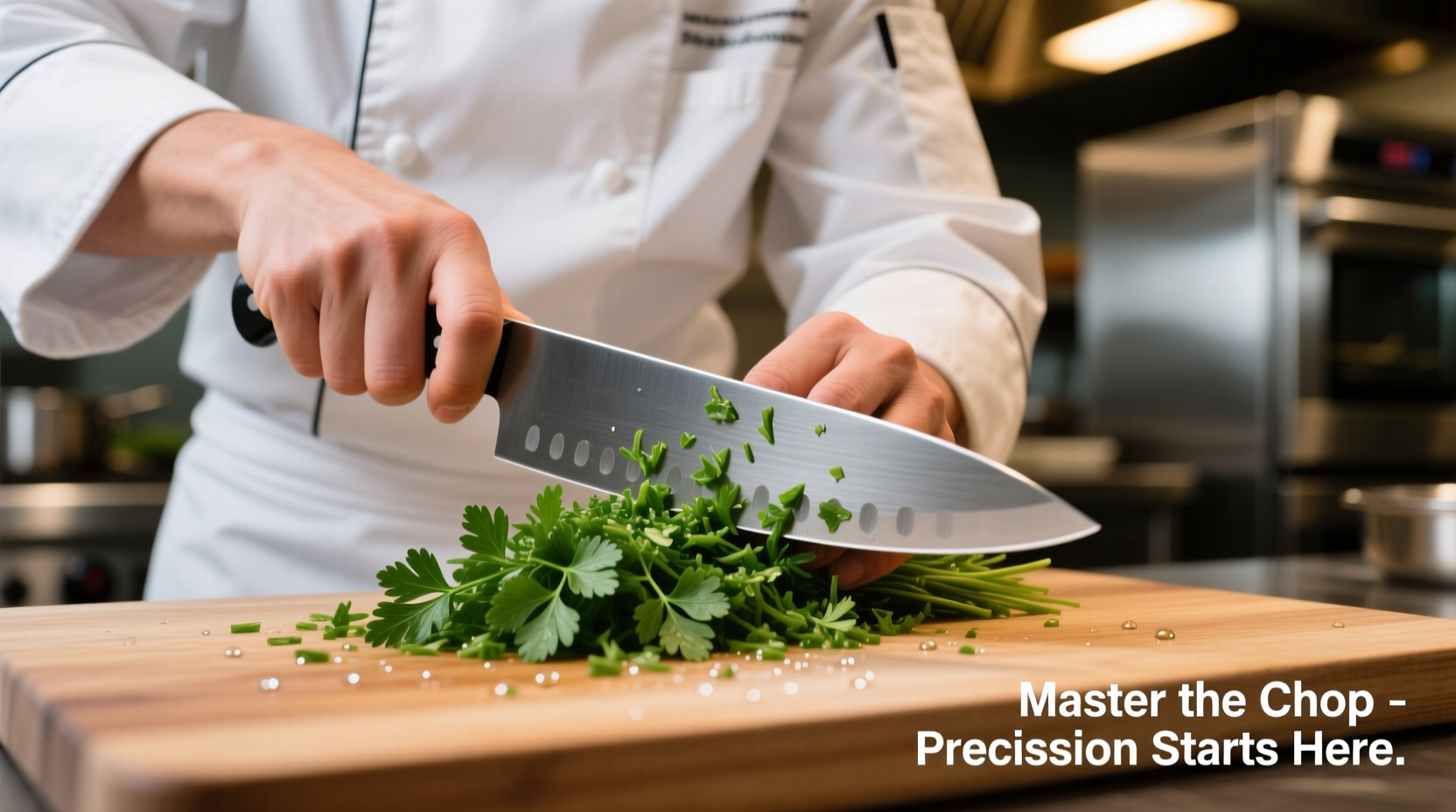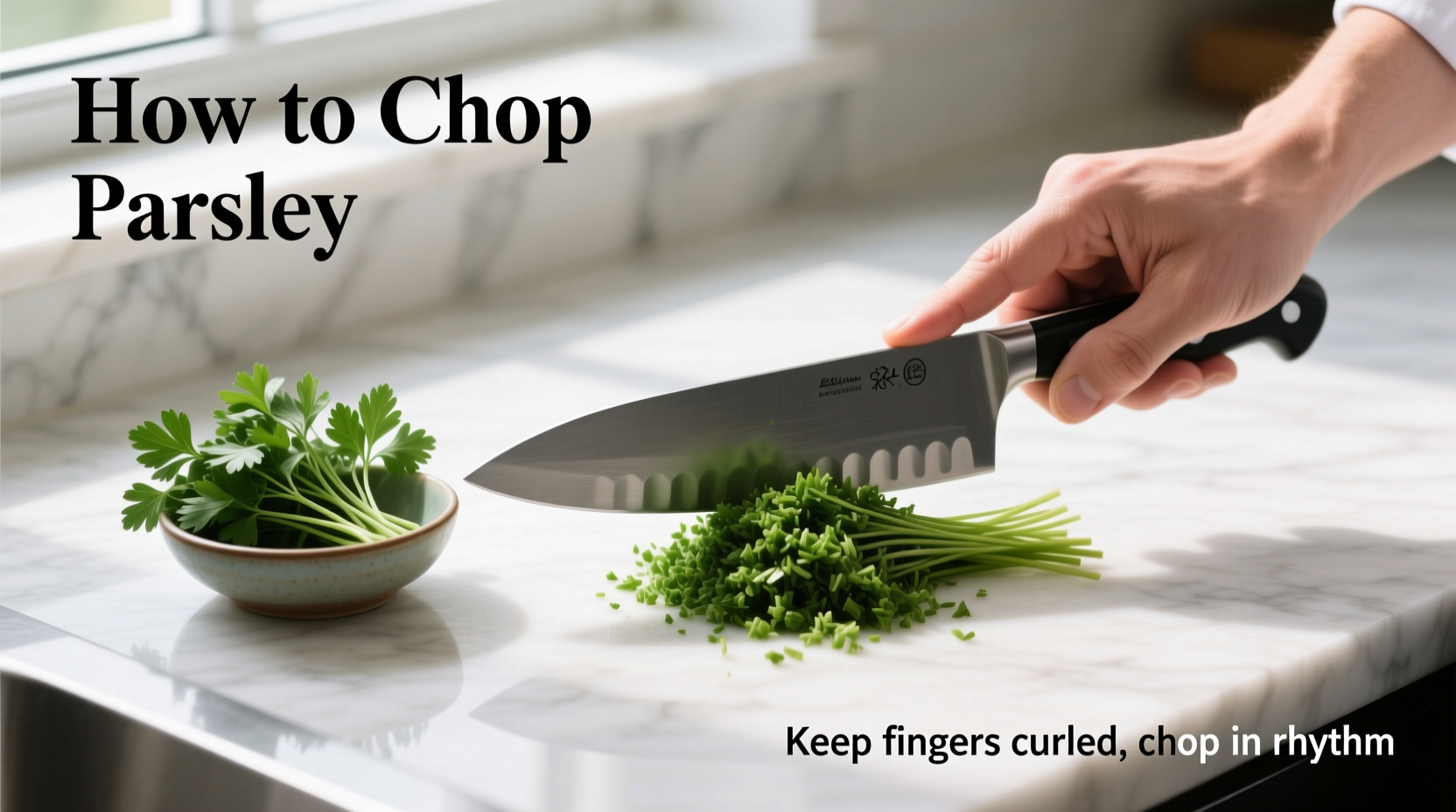Mastering the art of chopping parsley transforms this humble herb from a mere garnish into a flavor powerhouse. Whether you're preparing a classic chimichurri, finishing a steak, or adding freshness to Mediterranean dishes, the right chopping technique makes all the difference. Most home cooks struggle with parsley scattering across the cutting board or turning black from improper handling—issues easily solved with professional methods that take under two minutes to learn.
Why Proper Parsley Chopping Technique Matters
Correct parsley preparation directly impacts both flavor release and visual appeal. When chopped properly, parsley releases essential oils that enhance its bright, slightly peppery flavor. Improper technique causes bruising, which leads to oxidation and that unappetizing black discoloration. Culinary professionals know that how you handle herbs affects their shelf life too—properly chopped parsley stays vibrant for days longer than roughly handled sprigs.
| Parsley Type | Best For | Chopping Recommendation |
|---|---|---|
| Flat-leaf (Italian) | Cooking, sauces, marinades | Fine chop for maximum flavor release |
| Curly parsley | Garnishing, salads | Slightly coarser chop to maintain structure |
Essential Tools for Perfect Parsley Chopping
You need surprisingly few tools for professional results:
- A sharp 8-inch chef's knife (dull knives crush rather than cut)
- A stable cutting board (wood or composite)
- A clean kitchen towel or salad spinner
- A small bowl for finished herbs
Professional chefs emphasize that knife sharpness is non-negotiable—dull blades damage herb cells, causing rapid browning. The USDA Food Safety and Inspection Service confirms that proper knife maintenance prevents cross-contamination and preserves food quality (USDA Kitchen Sanitation Guidelines).

Step-by-Step: The Professional Parsley Chopping Method
Step 1: Prepare Your Parsley
Start by washing parsley thoroughly under cold running water. Gently swish sprigs to remove dirt trapped in the leaves. For stubborn soil, fill a bowl with water and let parsley soak for 2 minutes before rinsing. Dry completely using a salad spinner followed by patting with a clean kitchen towel—wet herbs won't chop cleanly and will dull your knife faster.
Step 2: Remove Tough Stems
Gather small bunches (about 10 sprigs) and hold vertically. Using your knife, slice through the bottom 1-2 inches of stems—the woody parts that would make your chop uneven. For recipes where stem flavor is acceptable (like stocks), you can reserve these for later use.
Step 3: The Rocking Knife Technique
This professional method prevents parsley from scattering:
- Gather dried parsley into a tight bundle
- Place your non-dominant hand flat on top of the knife blade near the tip
- Anchor the knife tip to the cutting board
- Rock the blade back and forth with a smooth motion
- After 5-6 chops, rotate the pile 90 degrees and repeat
Stop when pieces reach your desired size—typically 1/8 to 1/4 inch for most applications. Over-chopping releases too much oil and causes browning. This technique works because it cuts rather than bruises the leaves, preserving both color and flavor.
Avoid These Common Parsley Chopping Mistakes
Even experienced home cooks make these critical errors:
- Using a dull knife - Crushes leaves instead of cutting cleanly
- Chopping while wet - Causes slipping and uneven cuts
- Overfilling the knife - Leads to inconsistent sizing
- Using a food processor - Almost always over-processes delicate herbs
Food science research from the Culinary Institute of America shows that herbs chopped with a sharp knife retain 37% more essential oils than those processed in blenders, directly impacting flavor intensity (CIA Culinary Research).
Storing Chopped Parsley for Maximum Freshness
Properly stored, chopped parsley maintains quality for 3-5 days. Place in an airtight container lined with a slightly damp paper towel. For extended storage (up to 2 weeks), submerge in cold water in a sealed container—change water daily. Never store chopped herbs in oil at room temperature due to botulism risk; refrigerated herb oils should be used within 3 days.
When to Use Different Chop Sizes
The ideal chop size depends on your application:
- Fine chop (1/8 inch) - Sauces, dressings, compound butters
- Medium chop (1/4 inch) - Garnishes, roasted vegetables, grain salads
- Rough chop - Stocks, soups, stews where appearance matters less
Understanding these context boundaries prevents the common mistake of using overly fine parsley as a garnish—it should be visible and textural, not disappear into your dish. Mediterranean chefs traditionally use medium chops for tabbouleh to maintain the herb's presence alongside bulgur wheat.
Advanced Technique: The Parsley Leaf Separation Method
For delicate applications like finishing consommé or fancy plating, separate leaves from stems first:
- Hold a sprig by the stem and run your fingers downward
- Collect leaves in your palm
- Chop leaves alone using the rocking method
This yields the most uniform color and texture but takes significantly longer—reserve for special occasions where presentation is paramount.











 浙公网安备
33010002000092号
浙公网安备
33010002000092号 浙B2-20120091-4
浙B2-20120091-4